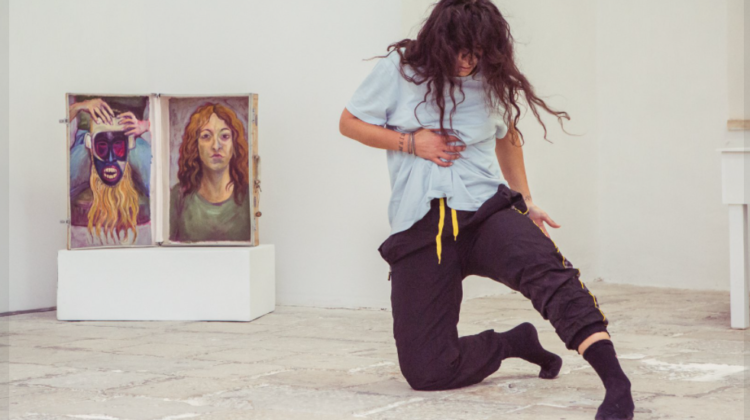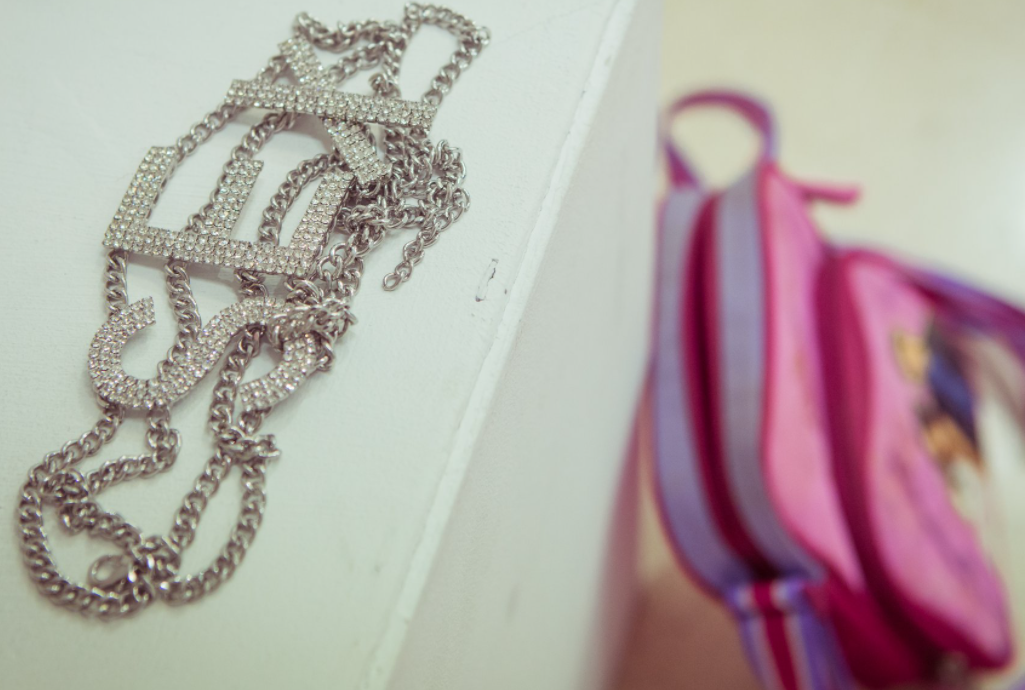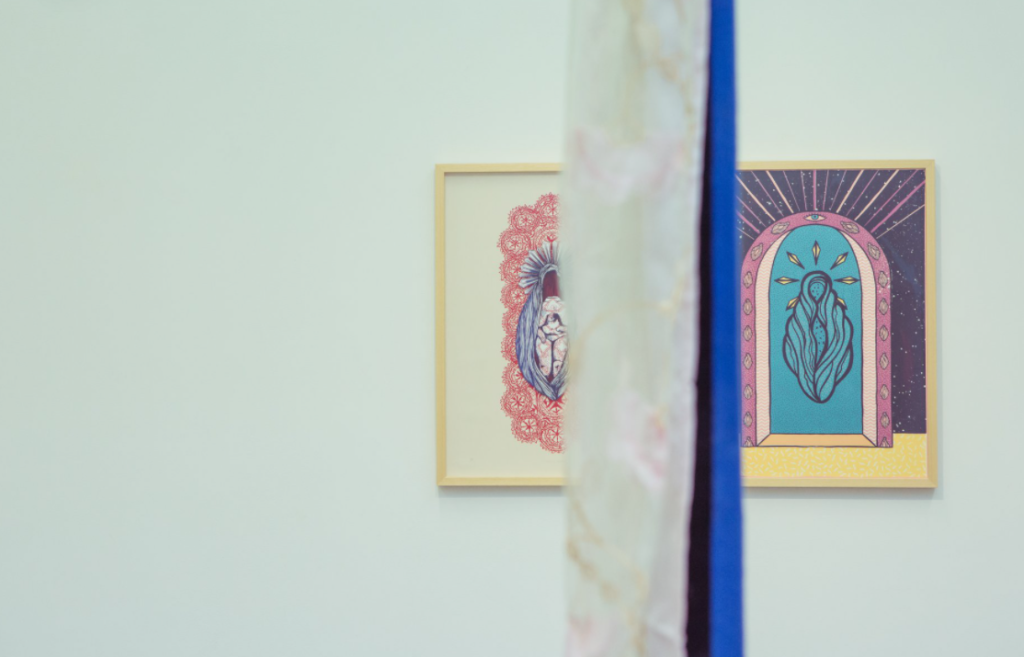
Photos by Elisa von Brockdorff
{v} for Vagina. And for an exhibition that has really created an impact on the visual arts landscape.
Even writing the word here feels odd. I don’t think I’ve ever actually written the word ‘vagina’ in over two decades of a writing career. Which is very odd, if you come to think of it. When did the word ‘vagina’ become an unofficial dirty word, something to whisper about in shameful – or, worse, sniggering – tones?
Throughout the years, the female anatomy somehow picked up a negative, derisory association. Even in pop culture, penis-related jokes tend to mostly play on the ‘power’ angle, with some exceptions.
Vagina jokes, on the other hand, remain firmly entrenched on the bad side of things. A gutsy person ‘has balls’. A coward is a ‘pussy‘.
Enter {v}, a collective exhibition that is currently running at Spazju Kreattiv. Curated by Lisa Gwen, it brings together 14 artists to place the vagina back where it belongs in a conscious celebration of ‘woman’. There’s nothing apologetic here, no blushes and no attempts to hide – the vagina is the common theme that unites all artworks and it is depicted in all forms, colours, shapes and angles imaginable, with Lisa Gwen clearly having a very specific direction in mind when choosing the artist line-up.

Let’s start with a surprise that has only been made possible as of last Thursday – Suzanna Scott’s celebrated Coin Cunts, which thanks to COVID-19 encountered delay in transport, are now exhibited in full glory. A massive well done to Lisa Gwen, who I know pretty much moved heaven and earth to make this possible. Scott is known for exploring feminist themes via visual aids, and this particular installation is a triumph on many levels, reclaiming the normally derisory ‘cunt’ and turning it into a symbol of female empowerment that finds its roots in the #MeToo movement – and somehow achieving through all this via the creatively repurposed purses. The end results teases us in a playful peekaboo but, of course, the symbolism behind Coin Cunts is not to be discounted.
Walking from one hallway to the next, it is clear that Lisa Gwen’s strong curatorial narrative, which was also informed by the international landscape, plays a pivotal role in the impact that this exhibition has upon demystifying the female form. The works are as diverse as, well, as the female anatomy they pay tribute to, with some of the artists creating new work for this collaborative effort. The collective body results in a kaleidoscope of moods. Sometimes the works are in your face, such as Jenna Tilley’s magnificent, neon labias. Whoever thought a close up of a labia could be so playful and pretty?
At others the vagina is depicted in gorgeous monochrome photography, such as Marcel Pommer’s – somewhat dreamy works, but packing a good punch and even creating a very good metaphor for what the various emotions the vagina gives birth to in every woman, whether we are being playful, scared or trying to be protective of our intimacy.
Kane Cali’s infamous pastizzi, blown up to a gloriously giant format, and Kim Sammut’s somewhat obvious, somewhat subtle (you need to see them to understand) works are truly mesmerising, while Alexandra Aquilina’s print screen work combines the sacred and the profane in a wonderfully ironic (and nostalgic) manner.
Gabriel Buttigieg’s work offers an imposing piece de resistance as you reach the final hall of the exhibition. The Agnus Dei diptych carries the legend ‘After Van Eych, Rubens’ Rape, Raimondi’s Ariane & Michelangelo’s Lady and the Swan. The final piece, in fact, works in defined elements from each masterpiece while creating an entirely new narrative for the viewer.
This final hall of {v} contains some true gems from V. George Muscat’s ceramic pieces, for instance, which celebrate the female form in all its stunning diversity while rendering an incredibly realistic portrayal that is a testament to Muscat’s skill in manipulating ceramics.
Ritty Tacsum’s The Secret of My Flower takes the opposite approach, portraying a subtle, clever and equally sensual depiction with hidden layers adding an extra dimension to every rose petal. A work that is a departure from the mood that I have come to associate with Tacsum, but just as effective in its implementation of context.
The other end of the hall is dominated by Pillion, a large-scale Oil & Mixed media on canvas by Isabelle Borg, an exercise in wit and colour that results in a veritable trompe-l’œil . We are so very lucky that the curator managed to borrow this from a private collection, and the mis-en-scene around the work certainly grounds it in our imagination.

Sadly, I didn’t manage to catch Charlene Galea’s performance Did You Come? – fully-booked pretty much pronto – but judging from the imagery and the online comments, if you manage to catch an empty spot due to cancellations, go for it. I know I will. This is one exhibition that anyone who cares about how the arts can inform the discussion surrounding female rights cannot afford to miss, and I am sure it will be pivotal is starting the conversation.
{v} runs at Spazju Kreattiv, Valletta, until March 21. Participating artists: Alexandra Aquilina, Kevin Attard, Isabelle Borg, Gabriel Buttigieg, Kane Cali, Charlene Galea, Christian Muscat, George Muscat, Matthew Pandolfino, Marcel Pommer, Kim Sammut, Suzanna Scott, Ritty Tacsum and Jenna Tilley. PS – you can also take home a little keepsake when visiting the exhibition – a super cool poster designed by Souvenirs that Don’t Suck.
Check out what else is happening on the arts landscape in Malta – read about Darkness at Noon, or this review of ŻiguŻajg 2020 or this review of Alice in Wonderless Land.


